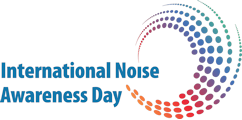dancing till deaf
By Ed Walsh; edited excerpts by Kathy Peck, executive director H.E.A.R. | Hearing Rehabilitation Quarterly – Volume 25, #1 (2000)
popular dance clubs violate your hearing and the law
What? That’s how you could be starting your conversations in a few years if you attend one of San Francisco’s most popular dance clubs. After testing the decibel levels of a dozen of The City’s clubs we found sound levels so loud that they not only violate your hearing, they violate the law. The survey found the loudest club in San Francisco, the Sound Factory, was also its most popular. It belted out music as high as 105 decibels (dBA). That’s louder than sandblasting. According to the National Institute for Occupational Safety and Health (NIOSH) recommendations, you should limit your time in the Sound Factory to 4 minutes and 43 seconds. By contrast, the quietist club in the survey, Holy Cow, measured at 94 dBA. NIOSH says you can spend an hour on its dance floor before your hearing is at risk.
All the clubs surveyed were in violation of the California Occupational Safety and Health Administration’s (CAL-OSHA) laws governing noise in the workplace. CAL-OSHA told the Bay Area Reporter it doesn’t have the resources to routinely monitor the clubs. Some of the clubs surveyed were so loud, NIOSH would recommend that its workers should wear both earplugs and earmuffs. However, there are virtually no regulations in place to protect the clubs’ customers from noise. If a club patron believes a club is the source of his or her hearing damage, the only recourse is a civil lawsuit. Because hearing loss is insidious, proving one source as a cause of hearing loss is at best a legal challenge.
Aerobic exercise while listening to loud noise (in this case dancing), alcohol consumption, smoking and exposure to second hand smoke have been shown to make noise-induced hearing damage even worse. Most club patrons seem oblivious to the risks. Sound Factory customer Paul Collins, 26, believes noise-induced hearing loss for the most part is a “myth.” Collins says he’s been going to clubs regularly and hasn’t noticed any problems with hearing loss but then adds that he has noticed ringing in the ears after leaving a club. Experts say ringing in the ears should be thought of as an alarm bell signaling that temporary hearing damage has taken place and over time could result in permanent hearing damage.
For Mikel Scott, ringing in the ears after leaving a dance club was not temporary. Scott, 36, is a New York-based flight attendant who frequents San Francisco gay dance clubs on his weekly stopovers. For the past six years, Scott has suffered from tinnitus. The ringing in his ears never stops. “It’s constant,” says Scott. “It’s the worst when it’s quiet because all I can hear is the ringing.” Scott says he got tinnitus one evening after dancing too close to the speakers at an Atlanta dance club. “My ears were ringing when I left the club that night and it’s never stopped” Ironically, Scott can forget the ringing while clubbing because the loud music drowns out the ringing. Some clubgoers say they have cut back on their attendance because of the noise. Kanani Cruz, 34, says she used to go to clubs at least once a week. Now she goes about three times a month. Cruz says the noise is so extreme that she “can’t hear zip” when she leaves and often suffers from headaches and ringing in the ears following her club attendance. Julie Macias, 28, attributes a steady loss in her hearing to regular clubgoing. “When I leave the clubs, my ears ring all night till the morning,” says Macias. “I’ve had to wear a special headset at work to boost the sound so I can hear the callers and I’ve learned to lip read.”
All the clubs surveyed are in violation of the California Occupational Safety and Health Administration (CAL-OSHA) regulations on workplace noise. The law, which mimics the Federal OSHA rules, requires that employees working in sound levels over 85 dBA wear ear protection, be given regular hearing exams, and be provided with an employer-sponsored hearing loss education program. The law also requires warning signs be posted in areas where ear protection is required. But CAL-OSHA does not spot-check nightclubs. It only responds to complaints from workers. CAL-OSHA spokesman, Dean Fryer, says his agency doesn’t have the resources to routinely monitor dance clubs but he says CAL-OSHA investigates all employee complaints and any club employee can file a complaint anonymously. Fryer adds that the law prohibits employers from firing or taking punitive action against an employee who files a complaint.
The National Institute for Occupational Safety and Health (NIOSH) guidelines say exposure to the Sound Factory’s average of 105 dBA for more than 4 minutes and 43 seconds a day without ear protection is a serious risk to hearing. NIOSH recommends that workers exposed to levels over 100 dBA wear both earplugs and earmuffs. The quietest club surveyed, Holy Cow, averaged a relatively tame 94 dBA but NIOSH says unprotected exposure even at that level for more than an hour a day could be dangerous. At 103 dBA, Release, which meets Saturday nights at the club space on 1015 Folsom Street, falls between the two extremes. NIOSH recommends unprotected exposure at that level be limited to 7 minutes and 30 seconds a day.
Hearing loss is a fact of work life, say the people who make their living in dance clubs. Sadly, they may be “spinning until they turn deaf.”
H.E.A.R. is a non profit grassroots organization dedicated to the prevention of hearing loss and tinnitus among musicians and music fans.
H.E.A.R. celebrates and honors musicians and music while working with them to help prevent hearing loss and tinnitus in their environment.
